GREEN MARTIN GRAVEYARD
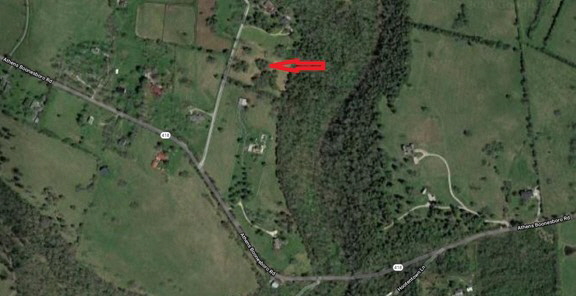
This small cemetery on Athens-Boonesboro Road contains two burials, one for Green Martin and one for his wife Mary Sue Martin.
Green Martin—Soldier, Farmer and Beloved Husband
Green Martin enlisted in the Union Army during the Civil War. In September 1864, his unit was ordered to City Point, Virginia, where they participated in the siege of Petersburg and Richmond. His regiment then fought in the Appomattox Campaign, which ended with Robert E. Lee’s surrender on April 9, 1865. The regiment remained on active duty after the war, serving in Texas and Louisiana. Green mustered out in January of 1867.
After the army, he returned to Clark County, where he farmed for many years. In 1890, he received a small disability pension, less than $12 a month, for his military service. Green owned a little place on Lower Howard’s Creek that he resided on until 1914, when he retired at age 68 and moved to Winchester. He died of Bright’s disease in 1924. Green’s will left everything to his wife, Mary Susan. His assets consisted of Liberty bonds and bank deposits totaling $1,363, in addition to the house in town.
The Winchester Sun published a “Memorial to Mr. Green Martin,” which included the following verse penned by his wife “in memory of my beloved husband”:
Loving husband, to me so dear,
Now has passed away from here.
Since by God’s will be done
When for my loving husband he sent
And into a home in Heaven he went,
I missed his love more every day.
He tried so hard in every way
To make for me a happy home
To look to God and his alone.
After the funeral, Mary Susan buried Green on her family’s land. Mary Susan died in 1935 and was laid to rest beside her husband. The cemetery has a fine stone fence surrounding the two graves. Standing near Green’s gravestone is a Civil War veteran’s marker for “Green Stephens, Corpl., Co. A, 116 U.S.C. Inf.” To translate, Green Martin was a corporal in Company A, 116th Regiment of the U.S. Colored Infantry; he had enlisted under the name of his owner, John Stevens.
John Stevens owned extensive farming lands in Clark and Madison counties. One of his properties included the site of Fort Boonesborough, and he operated the ferry there for fifty years. Since John was the only slaveholding Stevens/Stephens in that area listed in the 1860 census, he almost certainly was the owner of Green. Green’s death certificate indicates that he knew his own father’s name, Jacob Martin, but not his mother’s.
During the war, Kentucky’s slaves could escape bondage by enlisting in the Union army and they did so in remarkable numbers. Nearly 24,000 African American soldiers are credited to the state; that number represents 57 percent of those aged 18 to 45 who were eligible for military service. Green was just past his eighteenth birthday when he traveled to Camp Nelson to join the army along with his older brother John. On the same day he enlisted, Green was promoted to corporal.
Although freed by the Thirteenth Amendment, times were extremely difficult for former slaves after the war, including veterans. To quote Frederick Douglass, they “had neither money, property nor friends.” Hardly any owned land, and there were few opportunities open to those who had no trade to practice. And while many were badly treated, all were denied the full rights of citizenship. Large numbers fled to the North, others migrated to the cities. In Clark County, most of the freedmen who stayed went to work as farm laborers. Green Martin was no exception.
All Cemeteries
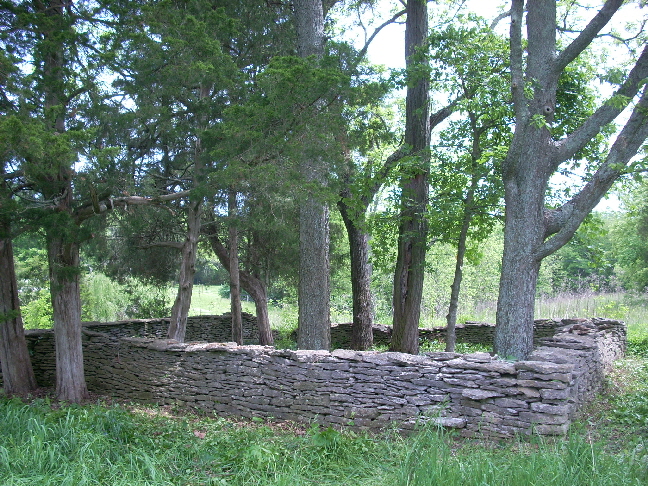
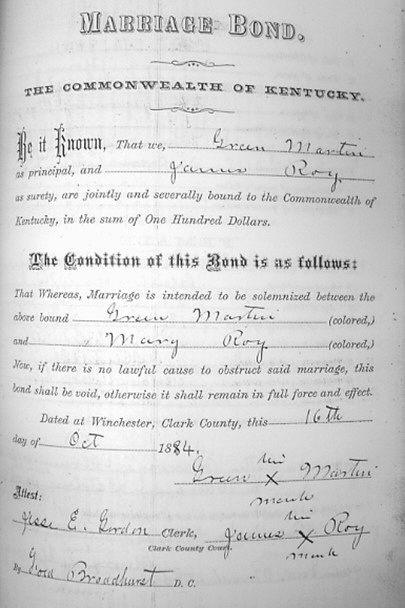
Green married Mary Susan Roy, a daughter of James Roy and his wife Kittie, who lived near Jouett Creek on Athens-Boonesboro Road. Green managed his affairs well and was able to save some of the money earned by his labors. By 1891, he had accumulated enough to buy a small farm on Lower Howard’s Creek. He paid Alexander S. Hampton $200 in cash for eight acres located about one-quarter of a mile downstream from the old Jonathan Bush Mill, then operated by Hampton. This land is now in the Lower Howard’s Creek Nature & Heritage Preserve. There are two limestone foundations on the site, one a 40’ x 60’ dwelling and the other identified as a 33’ x 46’ livestock pen. The tract is almost completely surrounded by stone fences and has an unusually large area of early-blooming daffodils.
In 1914, Green Martin sold his little farm and bought a home in Winchester. He paid Harvey Lisle $450 in cash for a house and lot located on Spring Street and backing up to the Winchester Cemetery. Green belonged to the Good Samaritan Lodge and the Broadway Baptist Church. At his death, he left a wife and sister but no children. Mary Susan lived for eleven more years, supporting herself by doing housework and $8 a month from her husband’s military pension. She died of heart disease at the age of 82.
Green Martin left no direct descendants to tend his grave. Over the years, the tiny cemetery became badly overgrown with trees, vines and honeysuckle. In the spring of 2010, the Clark County Cemetery Board held a cleanup day for the graveyard located on the Rodgers Place on Athens-Boonesboro Road. After the underlying vegetation was removed, the cemetery and its gravestones were returned very nearly to their condition of a century before.
Sources
Muster rolls in Kentucky Adjutant General’s Report on Kentucky’s Union Troops; Civil War pension index cards at fold3.com; Regimental histories at nps.gov/civilwar/; Clark County Deed Book 57:374, 87:229, 88:578; Clark County Colored Will Book 1:152; Clark County Inventories, Sale Bills and Settlements 38:83, 129; Kentucky death certificates at Ancestry.com; U.S. Census, Clark County, 1860-1920; Clark County Marriage Books; Winchester Sun, May 11, 1912, September 8, 1924; Charles Kerr, History of Kentucky, Volume 4 (Chicago, 1922), p. 434; Ira Berlin, et al., Slaves No More (Cambridge, UK, 1992), p. 203; Ross A. Webb, Kentucky in the Reconstruction Era (Lexington, 1979), pp. 36-61; James M. McPherson, Struggle for Equality (Princeton, NJ, 1964).
Green Martin’s military marker under his Civil War enlistment name, Green Stephens
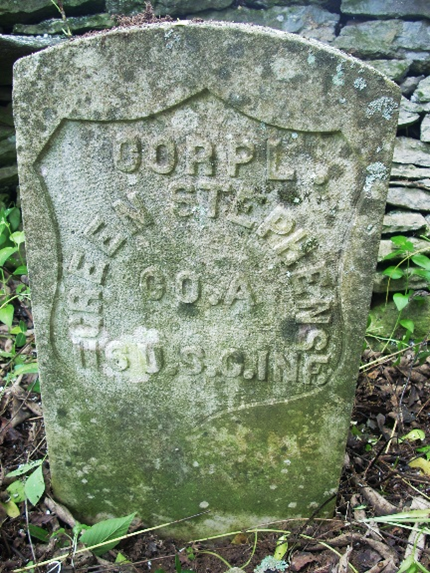
Mary Sue Martin (1853-1935)
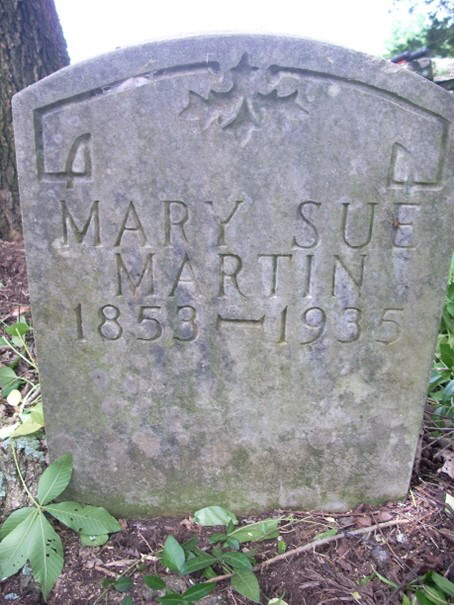
Green Martin (1864-1924)
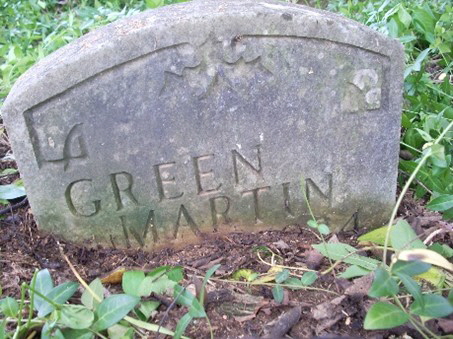
WINCHESTER BLACK HISTORY
AND HERITAGE COMMITTEE


© 2019-2024, ALL RIGHTS RESERVED,
Winchester Black History and Heritage Committee
Website Designed and managed by Graphic Enterprises

